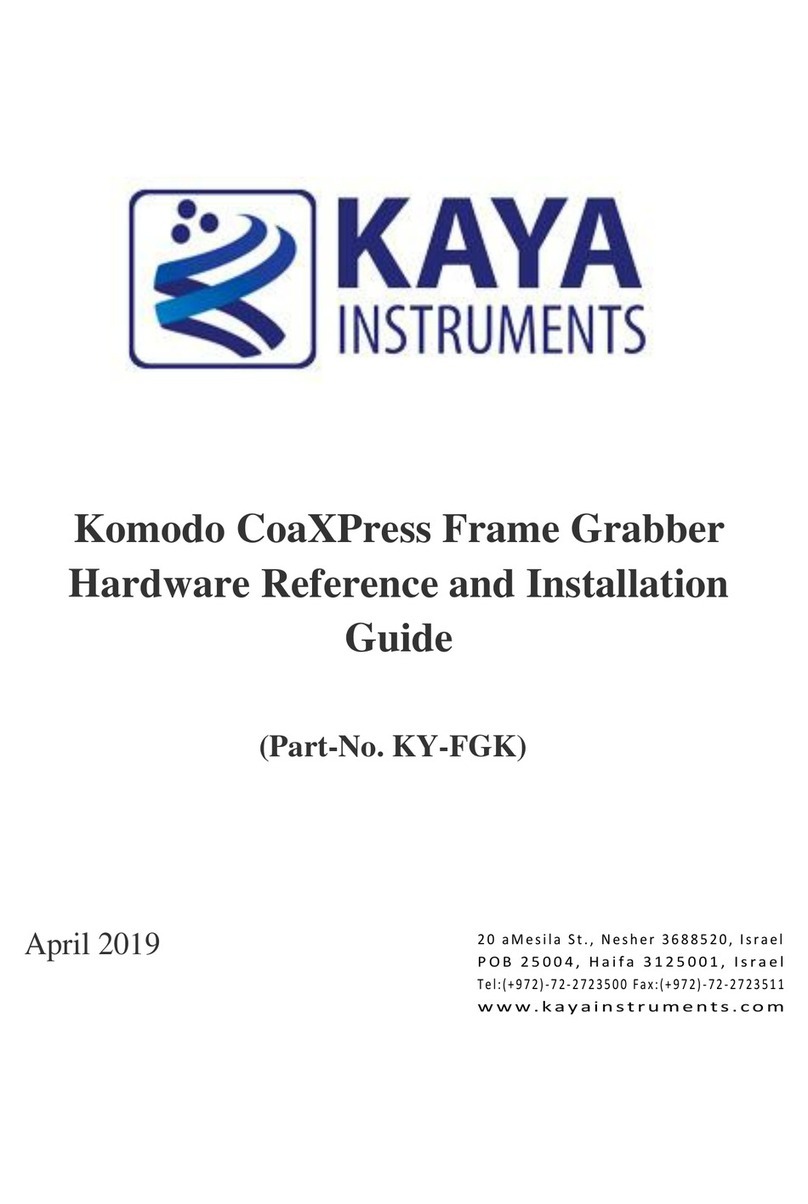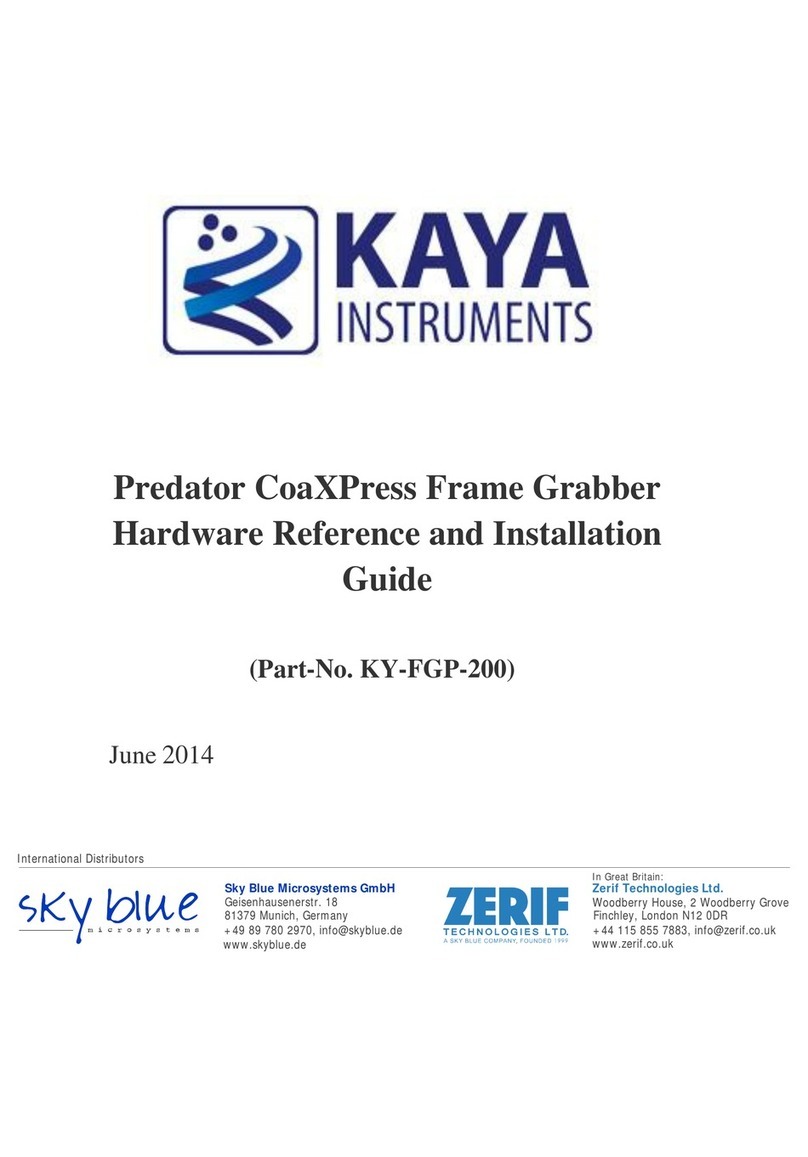Figures
FIGURE 1:BOARD BLOCK DIAGRAM................................................................................................................ 11
FIGURE 2: KOMODO FIBER FRONT VIEW.......................................................................................................... 12
FIGURE 3: KOMODO FIBER BACK VIEW ........................................................................................................... 12
FIGURE 4: CLOCKS PIN ASSIGNMENTS,SIGNAL NAME AND FUNCTIONS.......................................................... 14
FIGURE 5: I/O AND TRANSCEIVER USAGE........................................................................................................ 15
FIGURE 6: GENERAL PURPOSE INPUTS AND OUTPUTS ..................................................................................... 16
FIGURE 7: RZQ CONNECTION WHEN ONLY THE ON-BOARD MEMORY IS USED................................................ 20
FIGURE 8: RZQ CONNECTION WHEN ONLY THE SODIMM MEMORY IS USED................................................. 20
FIGURE 9: RZQ CONNECTION WHEN BOTH MEMORIES ARE USED ................................................................... 21
FIGURE 10: ON-BOARD DDR3 SIGNAL CONNECTIONS .................................................................................... 22
FIGURE 11: PCB MECHANICAL DIMENSIONS.................................................................................................. 32
FIGURE 12: FUNCTION DIAGRAM..................................................................................................................... 37
FIGURE 13: SFP+ LOOPBACK FIXTURE ............................................................................................................ 40
FIGURE 14: QSFP LOOPBACK FIXTURE............................................................................................................ 40
FIGURE 15: DDR3 SODIMM .......................................................................................................................... 40
FIGURE 16: KOMODO FIBER WITH LOOPBACK FIXTURES.............................................................................. 41
Tables
TABLE 1: KOMODO FIBER BOARD COMPONENTS ............................................................................................ 13
TABLE 2: CLOCKS PIN ASSIGNMENTS,SIGNAL NAME AND FUNCTIONS ........................................................... 15
TABLE 3: GENERAL PURPOSE INPUTS AND OUTPUTS PIN ASSIGNMENTS,SIGNAL NAME AND FUNCTIONS...... 17
TABLE 4: GENERAL PURPOSE LEDS PIN ASSIGNMENTS,SIGNAL NAME AND FUNCTIONS ............................... 18
TABLE 5: PCIE PIN ASSIGNMENTS,SIGNAL NAME AND FUNCTIONS ................................................................ 19
TABLE 6: ON BOARD SDRAM PIN ASSIGNMENTS,SIGNAL NAME AND FUNCTIONS........................................ 25
TABLE 7: SODIMM PIN ASSIGNMENTS,SIGNAL NAME AND FUNCTIONS ........................................................ 28
TABLE 8: QSFP PIN ASSIGNMENTS,SIGNAL NAME AND FUNCTIONS............................................................... 28
TABLE 9: SFP+ PIN ASSIGNMENTS,SIGNAL NAME AND FUNCTIONS................................................................ 30
TABLE 10: SFP+ AND QSFP LEDS PIN ASSIGNMENTS,SIGNAL NAME AND FUNCTIONS................................. 30
TABLE 11: FAN PIN ASSIGNMENTS,SIGNAL NAME AND FUNCTIONS................................................................ 31
TABLE 12: ABSOLUTE MAXIMUM RATINGS ..................................................................................................... 32
TABLE 13: POWER INPUT................................................................................................................................. 33
TABLE 14: MAXIMUM AND MINIMUM INPUT VOLTAGES FROM PCIE.............................................................. 33





























